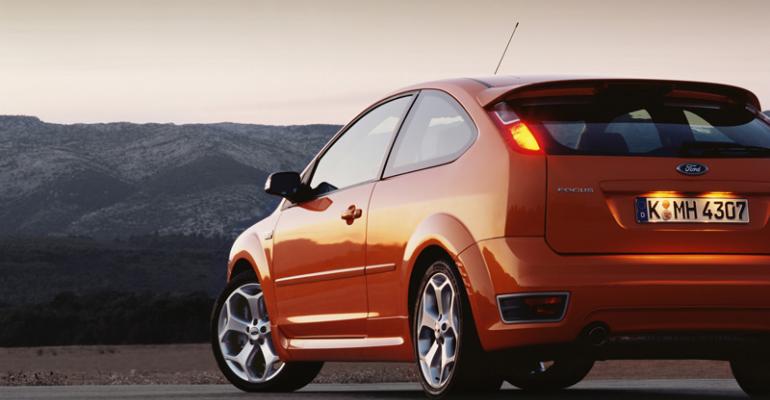MOSCOW – Two U.S. auto makers are considering accelerating their expansion in Russia amid the market’s ongoing growth and government tax breaks.
General Motors’ light-vehicle sales have tripled since arriving in Russia in 2009, and the auto maker plans to invest RR31.4 billion ($1 billion) in its operations during the next five years, says James Bovenzi, president and CEO of GM Russia and CIS.
GM expects to boost Russian production to more than 520,000 units by 2015, from 232,000 in 2010, and to launch several new models.
Two major factors pushing new-car sales here are the high level of deferred demand and average age of a car, which generally exceeds 10 years.
"The Russian middleclass is growing, with nine of the 10best-selling cars in the country being foreign cars,” Bovenzi says.
GM will begin selling its new Opel Zafira and Chevrolet Cruze, Aveo and Camaro this year in Russia. In 2013, it will add the low-budget Chevy Cobalt, to be imported from Uzbekistan.
The subcompact Aveo initially will be assembled from semi-knocked-down kits at the Kaliningrad plant owned by GM’s Russian partner, Avtotor, but production will be moved to the Gorky Automobile Plant by year's end.
At least RR31.5 million ($100 million) of GM’s planned investment will be spent for the construction of a plant to produce stamped body parts in St. Petersburg.
Ford’s expansion plans will be coordinated with its Russian partner Sollers. The two companies announced the establishment of the Ford Sollers joint venture in 2011 and this year intend to increase production 20% from year-ago at the Vsevolozhsk plant, in the St. Petersburg region.
Ted Kannis, CEO of Ford Sollers, says Ford expects to produce 119,000 cars this year, compared with 99,000 in 2011.
Sales last year reached 118,000 units, up 30% from 2010 and are expected to total 140,000 this year. The biggest demand is for the Focus C-car and Mondeo midsize sedan.
The Focus was the fourth best-selling car in Russia last year, and Ford anticipates deliveries will continue to grow, boosted by the recent production launch of the hatchback model at Vsevolozhsk.
Russian auto analysts say Ford and GM should focus their expansions on the vast Russian province, rather than the large cities such as Moscow and St. Petersburg, where new-car markets are close to saturation.
During the global financial crisis, demand for cars in the Russian regions fell significantly more than in the big cities, but they continue to recover at significantly higher rates. In addition, the per-capita number of cars is far lower than in the large cities.
Michael Shevelkov, sales director of Alarm-Motors Ford, one of Russia’s leading dealership networks, believes Ford has the best chance of succeeding in the province because of Ford Sollers’ extensive dealer network.
The commitment by Ford and GM to make Russia one their most important markets was evidenced by a recent visit here from representatives of 13 of the largest U.S. automotive component suppliers.
The companies are considering establishing production in Russia independently or through JVs with local manufacturers, and would operate in close cooperation with the GM and Ford plants.
Interest in the Russian market by the global OEMs and their suppliers is driven by the country’s high growth rate and its potential to become the largest car market in Europe.
The Russian auto market is recovering rapidly from the effects of the global recession, with new-car sales jumping 40% to more than 2.5 million units in 2011.
Deliveries this year continue to climb, up 15% to an August-record 258,761 units, pushing the 8-month total 14% higher to 1.93 million, according to the Association of European Businesses Automobile Manufacturers Committee.
Thanks to the efforts of the government, Russia in recent years has significantly buffed its image as a favorable country for foreign investment, as well as strengthened its fight against corruption and bureaucracy.
The government also has created favorable investment conditions and offered tax breaks to attract foreign automakers, especially those that have signed agreements to assemble their cars in the country.
One important benefit is the compensation for duties paid on imported vehicle components due to Russia’s recent membership in the World Trade Organization. Total compensation reportedly could exceed RR157 billion ($5 billion).
Russia last year issued a strict new rule for the assembly of passenger vehicles. Ford and GM both signed the agreement, along with other OEMs in the country, which calls for all assembly plants to have an annual capacity of 350,000 vehicles, with 60% localization. In return, auto makers receive tax breaks on imported auto parts.
But in doing so, the government angered the European Union, which complained to the WTO that the demand for 60% local parts would lead to a reduction of components sent to Russia. As a result, Russia promised to pay compensation to EU suppliers whose exports fell more than 25%.
The compensation will come from the federal budget and will be a direct transfer from the ministry of finance to the federal customs service. This will allow the parts makers to avoid unnecessary red tape in order to receive their funds.




